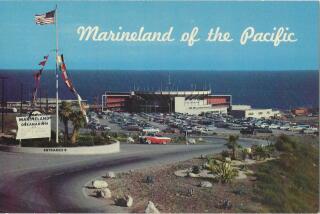Outdoor Notes : Huntington Beach Angler Claims First Marlin of 1988
- Share via
Who caught the first marlin of 1988? Dr. Mike Perley of Huntington Beach claims he did.
While spending the holidays fishing aboard the Off Call at Magdalena Bay, on the Pacific side of the Baja Peninsula, about 140 miles north of Cabo San Lucas, Perley said he hooked up Jan. 1 at 7:45 a.m. After a 45-minute fight he caught, and released, a striped marlin weighing approximately 145 pounds.
According to John (J. D.) Doughty of Bisbee’s Tackle in Newport Beach, Perley might have caught the first, but it would be difficult to confirm, since the marlin bite has been exceptional lately. Doughty maintains radio contact with fishermen as far south as Cabo San Lucas.
“He may have been the first, but I’ve been talking to people down there (recently) and there have been 5 to 10 hookups per boat per day,” he said.
Whatever the case, Perley’s group apparently had a productive New Year’s Day. Each of his three sons caught a striped marlin, highlighted by the 7-year-old Eric, who landed a 150-pounder on 30-pound-test line.
Before heading south to Cabo San Lucas, they also caught three yellowfin tuna in the 25-pound class and a dorado.
Doughty said that the recent cold weather in the Northern Hemisphere has pushed most of the marlin to Cabo, where the water temperature is about 73 degrees.
Three men whose yacht had capsized off the coast of South Africa’s Indian Ocean were guided to safety by a school of dolphins, according to a story in the Johannesburg Star.
The men told the paper that they were about half a mile offshore, trying to right the yacht in turbulent seas Wednesday when the dolphins appeared.
A storm was brewing and a shark had recently been sighted nearby.
Peter Stock said that the dolphins stayed with him for two hours as he tried to steer the rudderless yacht back to shore and that some of them also escorted his two companions, who swam back.
“They stayed with my friends right up to the breakers,” Stock said. “And as soon as we were all safely ashore, they disappeared. It was quite amazing.”
Due to record-breaking catches and strong returns to inland waters, biologists with Oregon’s Department of Fish and Wildlife have been calling 1987 the year of the chinook.
Harry Wagner, Department of Fisheries chief, told the Sport Fishing Institute about the tremendous chinook salmon production and said, “Good things are happening just about everywhere we look, and prospects for next year appear excellent as well.”
Some highlights of the year included record catches for commercial salmon trollers and sportfishermen alike, excellent recovery of fall returns to the Columbia River, record catches on the lower Columbia, good prospects for sport chinook fisheries in Oregon’s coastal bays, including fish weighing more than 60 pounds; excellent in-river spring returns on the Willamette, Rogue and Umpqua rivers, and strong fall returns on the Rogue River.
The chinook are back strong, according to Wagner, because of excellent ocean survival, reduced catches off Alaska and Canada, hatchery production improvements and expansion, and improved downstream passages of young salmon at dams on their way to the sea.
Briefly
Information on the Department of Fish and Game’s hunter safety courses to be offered through 1988 can be obtained by calling (213) 590-5670. . . . The International Fish and Game Assn.’s fourth international auction and banquet will be held Jan. 15 at The Breakers oceanfront hotel in Palm Beach, Fla. . . . A free one-hour slide show on fishing Alaska will be presented Jan. 24 continuously between 3 and 6 p.m. at the Fishermen’s Spot in Van Nuys. . . . 976--TUNA has put a free fishing information line into operation for people in the 714 area code until the telephone company incorporates 976 numbers into that area. According to General Telephone that might be within the next few months. The number is (714) 972-9818.
More to Read
Sign up for Essential California
The most important California stories and recommendations in your inbox every morning.
You may occasionally receive promotional content from the Los Angeles Times.













